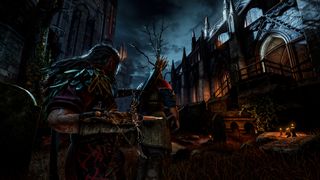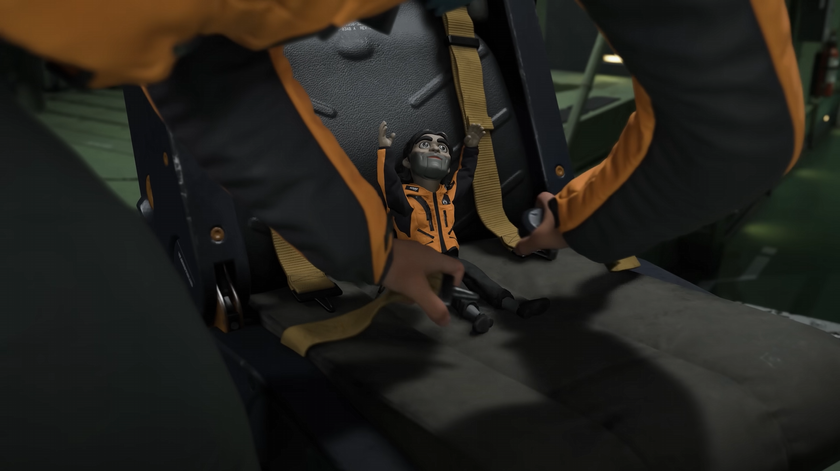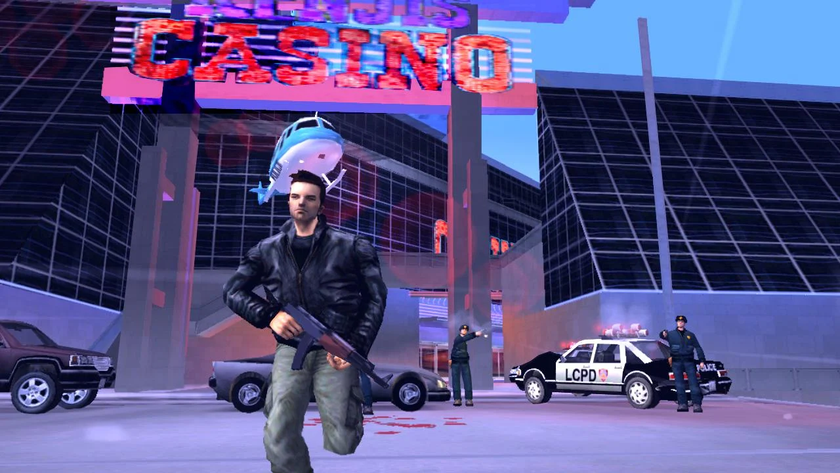
Despite everything else that occurred in 2020, the last twelve months were stellar for video games. Be it the surprisingly brilliant Assassin's Creed: Valhalla, the almost offensively pleasant Animal Crossing: New Horizons, or Square finally launching Final Fantasy 7 Remake, a tsunami of brilliant releases swept over us at a time where frankly, we needed them most. The question now then is this: what's next for gaming?
2020 ended on a high note, ushering in the dawn of a new console generation, but what do these odd-looking boxes really mean for gaming’s future? Sitting down with Bloober Team, Sumo Digital, Neon Giant and LKA, these four studios reveal why they find themselves feeling inspired by this shiny new era of gaming hardware, offering a glimpse into the exciting technological advances that we can expect from games in the months and years to come.
The first piece of good news is likely an obvious one: what we've seen with the likes of Demon Souls and The Medium are only a fraction of what Sony and Microsoft's new consoles are capable of.
Now you're playing with power

"We're working with the Xbox Series consoles only at the moment, and I think we can't honestly say at this point we have not even scratched the surface of what is possible with the new technology," reveals Neon Giant co-founder Tor Frick, who is working on The Ascent for Xbox Series X and Series S. "People who think we will just have slightly nicer looking games in 4K and 60 frames-per-second will be pleasantly surprised."
Following in the footsteps of the 4K-ready mid-generation upgrades, the PS4 Pro and Xbox One X, Tor's comments will be music to many early adopters' ears. Interestingly, every developer we approached seemed to agree that this generation will offer far more than just a resolution bump. The question is then, what do developers think has been improved since the introduction of 2016's stop-gap consoles?
"A lot!," according to Bloober Team's Szymon Erdmanski enthusiastically, adding that "better visual effects will be the first, most noticeable change: smoother animations, texture upgrades, more visual effects like rain, smoke or fog… Physics will play a bigger role in games as well, letting designers really explore different kinds of possibilities. Ultimately, I think [current gen] games will be more interactive than ever before."
It's a statement that Neon Giant's Tor seems to echo: "With the huge jump in CPU power and load speeds in particular, it is so much more feasible to create living, breathing worlds on next-gen. Not just fidelity of assets, but more interactive and reactive worlds. As a gamer and a developer, I can't wait to see what the industry will cook up."
Sign up to the 12DOVE Newsletter
Weekly digests, tales from the communities you love, and more
The teraflop trinity

As we move through the first year of the PS5 and Xbox Series X, we're going to glean a glimpse of the medium-altering potential of these new consoles – largely in three key areas.
"The three big headlines this generation are ray tracing, faster loading, and frame rates," reveals Sumo Digital Newcastle's design director Andrew Willans, working on multiplayer title, Hood: Outlaws & Legends. "Achieving higher and locked frame rates is key to delivering that silky smooth gameplay that feels more responsive and fluid. This is the biggest improvement, particularly in a competitive multiplayer game. The increased horsepower means that we do not have to compromise our artist vision for the game in order to achieve those higher frame rates. Now we can have our cake and eat it."
We have, of course, all heard about the much-lauded rapid loading times afforded by current gen's solid-state drives and, unsurprisingly, Sumo Digital isn't the only one singing the hardware's praises. "It may not be the most appealing feature for next-gen, but hyper-fast SSDs for those doing realistic 3D graphics are a godsend," states LKA's Luca Dalco, the team behind upcoming horror release Martha Is Dead. "Loading hundreds of textures in ultra-high definition in one second instead of 20 makes us feel really good! And it certainly feels great when you are playing a game with practically non-existent loading times."

"In the design of Hood, we had a huge list of loading screen tips... but on PS5 and Xbox Series X, you never see them,"
Andrew Willans
Interestingly, the shift to lightning-fast loading times is also changing how developers design their games, too. In the previous generation, lengthy loading screens were a great onboarding vehicle – a way to remind players of things they'd forgotten or even to teach them entirely new mechanics. This gen, developers have to get creative.
"In the design of Hood, we had a huge list of loading screen tips... but on PS5 and Xbox Series X, you never see them," explains Willans, "So now you have to think alright, well, that's great for last gen, but now how can we put those same tips into onboarding?”
The solution? To create hub worlds or spaces in lobbies that allow players the time to revise the mechanics and breathe. "We have to do a lot more artificial pauses to say, right, let's just slow the game down," Willans continues, "Here's some information because you really need to take this in. Now the system is moving so fast, the game moves so fast, and you don't get those natural breaks sat with your cup of tea, waiting for your game to load."
Thanks to the considerable jump in horse power over the last console generation, worlds and characters also stand to look more realistic than ever before. Aside from the much-lauded ray tracing, the lack of technical constraints will allow developers to massively increase the quality of what they can render on screen – be it higher poly character models or going all out with lighting. "The new tech will allow us to push in new directions with rendering as well," states Luca, "so I think as we adjust to this new technology base we will see a crazy shift in quality, and not just in AAA games, but indie titles as well."
A more pronounced generational leap

While we may never have another generational leap as astounding as the shift from 2D to 3D - or even SD to HD - for Neon Giant Co-Founder, Arcade Berg, this generational leap is far more pronounced than the shift from seventh to eighth-gen.
"I feel this is much more of a leap going into this new generation than the change prior," Arcade explains, "Nicer graphics, better audio, and higher framerate - absolutely, but what we'll really notice as a change is the speed of data transfer. It's more than just load times, but even more exciting is the loading while you're playing the game. Open world, seamless transitions between areas and story beats can practically be a non-issue. Worlds can be fuller, larger, and with higher density and quality than before."
Willans however, seems to be less wowed, suggesting that this generation's effect on video games will be more incremental than revolutionary." I don't think we can compare this to playing Mario 64 for the first time as we jumped into 3D, but now we can really make the most of our 4K TVs without having to juggle between performance and presentation."
With heavy-hitters like Horizon Forbidden West and Halo Infinite now only months away, there is clearly a lot for players to be already getting excited about. But what are developers most optimistic about for this console generation?

"I feel this is much more of a leap going into this new generation than the change prior"
Arcade Berg, Neon Giant
"I'm hoping that the extra power will be used to fuel more interesting game design that isn't so limited from a technical perspective," muses Willans. "The last gen popularized the battle royale sub-genre. It would be nice to see how that formula can evolve into more interesting player encounters, rather than just upping the player numbers."
The hope that this generation will fundamentally change (and inspire new) game mechanics is one shared by LKA: "More power means more freedom in development and, consequently, more freedom in the design of the game mechanics. This will influence the new products not only from an aesthetic point of view, but also from a functional one. Sometimes the former will be more evident, but other times the latter."
Beloved horror studio Bloober Team already feels as though it's achieved something new this generation. "Every generation we see new genres and styles of games created as technological solutions become available," says studio producer Jacek Zieba, "In The Medium, we're showing something previously not seen in games and previously not possible on previous console generations – two worlds accessible at once in a realistic setting. We're offering players a completely new way to experience both gameplay and storytelling in games, so it is a step towards something new."
Tools for fun

"All these new tools give new possibilities for us to tell new stories," agrees fellow Bloober producer Szymon Erdmański. "We're able to test ideas faster, which, alongside fast SSDs and more memory, lets us explore all kinds of opportunities. Personally, I'm enjoying the significant improvement in sound compared to previous generations."
For the smaller scale teams over at LKA and Neon Giant, it's this generation's accessible middleware and low barrier to entry that excites most. "This generational leap creates a parallel effect that is the extension of game engines," explains Luca. "These tools are the things that excite us the most, because they will take the new hardware beyond its current performance. For a few years, we will see an increasing quality of titles, as if the consoles themselves continue to become more and more powerful. Today we can only guess about all the new features and ideas that will see the light of day in many years from now..."
"[I'm excited that] devs of all sizes can focus on making games and be creative and worry less about how to make it run on the hardware," Arcade states. "This will result in many more fresh and interesting games from people who normally wouldn't be able to realize their ideas. And on the other end of the spectrum, where we have people that excel in getting 110% out of the machine – we will see fidelity and immersive quality beyond what we've seen in gaming today."
"I think this is a wonderful time to be a gamer," he continues, "and while games released this coming year will be fantastic - I'm very excited to see what we'll get throughout the generation."
For more, watch our Super Mario 3D World + Bowser's Fury review below, or check out the best PS5 games to play right now.

Tom is a freelance journalist and former PR with over five years worth of experience across copy-writing, on-camera presenting, and journalism.
Named one of the UK games industry’s rising stars by Gamesindustry.biz, Tom has been published by world-leading outlets such as: Fandom, The Guardian, NME, Ars Technica, GamesRadar, Engadget, IGN, Techradar, Red Bull, and EDGE.
















